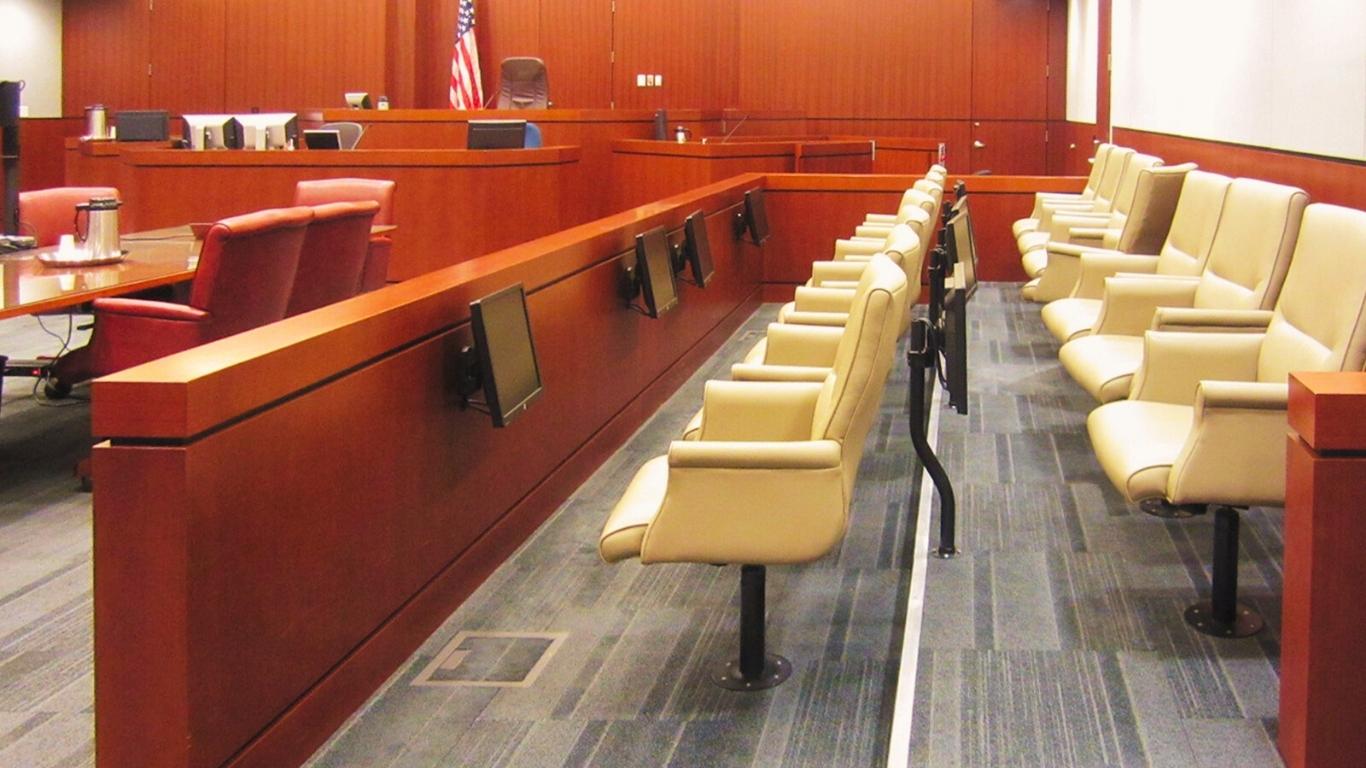As an architect, I don’t know everything about the courthouse planning process. As an undergraduate student at Ohio State University, my architecture professors routinely emphasized their belief that architects were the center of the universe, omniscient beings like Frank Lloyd Wright who could coordinate all endeavors required to grow our civilization. It sounded good to me at the time. Today? – not so believable.
When I started my graduate program in regional planning at the University of Wisconsin, the environmental, ecology-oriented professors on my thesis committee soon disabused me of that idea. During my numerous years in the profession, it became clear that architects know a lot about many things—but not everything—not even Frank Lloyd Wright.
For the past 14 years, I have been an architect with Fentress, Inc., primarily responsible for planning courthouses. Our company comprises a balanced number of architects and analysts working together on courthouse planning projects. This experience has further reinforced my awareness that architects know much but only some things. I am a reasonably accomplished architect, but I need to figure out how to dissect demographic and economic data or run a regression analysis to calculate future caseload levels as our analysts can do with ease tasks that are critical for me to begin my architectural efforts.
Would you happen to know who you're going to call?
Recently, our company president, Keith Fentress, posted an article titled: Who You Gonna Call, Architect vs. Court Planner? Keith asked: “How do we determine the courthouse space we need? and who can help us best?” He noted: “Architectural firms and court planning consultants have unique and overlapping skill sets. If you are concerned that your courthouse is overcrowded and out of space, which should you hire to plan for your future space needs?” He further stressed that the initial needs assessment phase “will provide a solid foundation for efficiently moving through the funding, design, and construction phases that follow – precisely the expertise of a qualified court planning consultant.”
So, what might happen when a court client begins a courthouse improvement project without the benefit of a court planning consultant’s knowledge?
Initial Missteps
A recent article in a southern Virginia newspaper may shed some light on the missing court planning consultant. (All names have been redacted in the following articles.)
“How trustworthy are the courthouse projections? It’s one thing to say the county needs to modernize its court facilities, but quite another to say how big the courts must be to handle future growth. __________ District Supervisor ______________ raised concerns last week about the trustworthiness of a study prepared by ______ Architects in July that does just that.
Based on population and caseload growth projections to 2035, the ______ firm proposed a _______ courts complex of 120,000 square feet, costing an estimated $44 million. The current county courts use shy of 68,000 square feet. “The _______ study projected the county’s caseload growth will exceed its population growth over 20 years,” ___ said. “Does that make sense?
A University _______ expert says no. The expert is ___________, a research specialist with _______________________, which produces the population projections on which the study appears to have relied. “We have a big note on our website warning our population projections are out of date at this point,” __________ said last week. “We advise against relying on them because we were using 2010 data, so there are five years of trends we haven’t captured.”
Another article in a central Colorado newspaper raised a similar issue.
“At a preliminary presentation on November _______________ Architecture explained that the square footage numbers are “requested” space needs — numbers that had not, he confessed, been thoroughly studied and justified by the architects. In other words, our County departments might be able to get along with less square footage than the numbers suggested… or they might need even more. (They’ve been getting along with less for the past several decades.)
He also clarified that these preliminary numbers have no direct relationship to what the County can reasonably afford.”
The Virginia and Colorado, court improvement projects, were only getting off to a good start with the expertise of a court planning consultant.
On the other hand, an article in a northern Illinois newspaper reports a different story for a courthouse improvement project where a court planning consultant was part of the design team.
“This has been and will continue to be a tremendous team effort at all levels of county government,” said Speaker _________. The work of the judicial branch and the Chief Judge’s input during the planning process has been vital to getting us to this point. Along with the entire county board, I look forward to moving forward with our public safety capital projects and seeing a new courthouse in downtown ______ by the end of 2019.”
Call Both - Court Planning Consultant and Architect
In his “Who You Gonna Call” article, Keith concluded with an observation with which, as an architect, I wholeheartedly agree. “A court may hire a court planning consultant directly or may elect to hire an architectural firm with a court planning consultant as an integral part of its team. A local architectural firm may be familiar with your courthouse and have performed numerous projects for years. Pairing with a court planning consultant enhances the team's knowledge and includes experience from the dozens – if not hundreds – of courthouses served by the court planning consultant. The court planning consultant also contributes analytical capabilities that ensure a more credible and defensible needs assessment.”
Why risk a misstep at the very beginning of your project? Who are you going to call? Could you be sure to contact both and include a court planning consultant as part of your courthouse project?


















